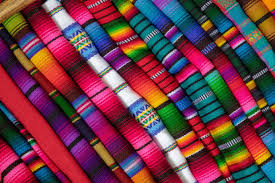GLOBISCOPES
Pakistan’s Textile Exporters Struggle as Rising Costs and Tariffs Erode Global Competitiveness
BUSINESS
Globiscope
10/8/20252 min read


KARACHI — Pakistan’s textile industry, the country’s top export earner, is finding it increasingly difficult to capitalise on the decline of Indian textile exports to the United States. Despite a temporary gap in the global market, Pakistani manufacturers are being squeezed by surging production costs, poor cotton yields, and policy hurdles that threaten their export potential.
While industry stakeholders had hoped to capture a larger share of the US market following tariff hikes on Indian goods, Pakistan’s exporters now face mounting obstacles, including inflation, high energy prices, and complex regulatory changes.
Javed Bilwani, President of the Karachi Chamber of Commerce and Industry (KCCI), voiced concern over the situation, stating, “Competing internationally has become almost impossible when our production costs are so high that selling profitably in the US is no longer feasible.”
High Tariffs and Policy Challenges Crippling Growth
A major setback for exporters comes from the United States’ 29 percent effective tariff on Pakistani textiles — combining a 10 percent base tariff and an additional 19 percent duty. This steep rate has made Pakistan’s products significantly less competitive compared to regional rivals like Vietnam, Bangladesh, and China, where lower production and energy costs continue to drive export growth.
Adding to the crisis, flood damage to cotton crops has led to a sharp decline in raw material quality and availability. Meanwhile, policy shifts such as changes in the Export Facilitation Scheme (EFS) and higher advance turnover taxes have further burdened manufacturers.
Rising Costs Squeeze Export Margins
The textile sector’s cost structure has been upended by expensive raw materials, rising fabric prices, and steep energy tariffs, which have collectively eroded profitability. Many companies are being forced to reassess their export strategies.
Leading textile group Gul Ahmed recently announced plans to scale back apparel exports, citing fierce regional competition, currency fluctuations, and policy uncertainty. The company said the move will allow it to focus on strengthening its domestic and sustainable business operations.
Industry Calls for Urgent Reforms
Exporters are now urging the government to take immediate action to improve cotton quality, rationalise taxes, and reduce production costs to regain competitiveness in global markets. Without timely reforms, experts warn that Pakistan may lose the opportunity to fill the market gap created by India’s reduced presence in the US and Europe.
The textile industry remains a cornerstone of Pakistan’s economy, contributing significantly to exports and employment. However, the current mix of tariff barriers, climate-related setbacks, and policy inconsistencies continues to undermine its potential.
Unless these challenges are addressed, Pakistan risks missing a crucial window to expand its global footprint — even as global buyers seek reliable alt
ernatives in South Asia.
Globiscopes news 2025
Globiscopes news empowers the generation of tomorrow for a brighter future and hope for every individual.
inbox
Subscribe to our newsletter and never miss a story.
We care about your data in our privacy policy.
